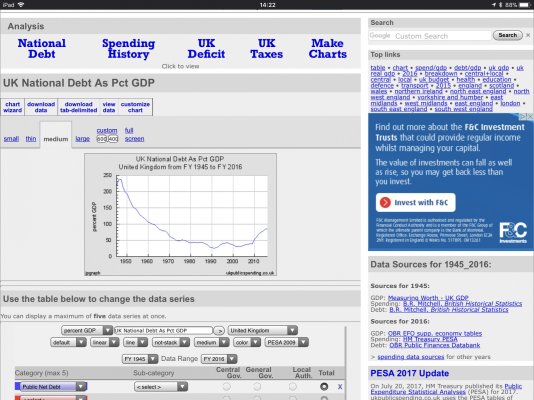ownyourfuture
Thinks s/he gets paid by the post
- Joined
- Jun 18, 2013
- Messages
- 1,561
**I don't want this to become political. I'm not going to name a single politician. Hell, I'm not even going to mention either party**
I think over the past 20 or 30 years, we've all become desensitized to huge numbers. Company A is merging with Company in a deal totaling $20 trillion. AT&T & Comcast announcing an agreement to combine merge certain parts of there businesses in a transaction of $72 billion, Apple & Amazon racing to be the 1st trillion dollar company, etc
I’ve always enjoyed breaking down numbers. So I decided to try to present the numbers relating to the national debt, in such a way that we could all have a better understanding of how astronomical these numbers really are.
The debt itself:
There's all kinds of numbers thrown around, by all kinds of people concerning the national debt total.
Some claim an astounding 128 trillion (if you add social security & medicare liabilities *see link below*) Others dismiss it & say that even if it was say, 50 trillion, this would only be around 3.00% of GDP & therefore a nonissue.
http://www.washingtonpost.com/blogs...es-have-128-trillion-in-unfunded-liabilities/
Let's just say (hypothetically) the ‘real’ debt totals 73 trillion.
Let's also say that beginning on January 1, 2018 the United States agrees to address it.
They do the following: From that day forward, they will not issue any additional debt. They will only spend as much as they take in.
They will pay no interest on the existing loans/debt. They will set aside 1 million out of the revenues that come in & pay off the ‘existing debt’ at the rate of 1 million per day.
With a zero interest rate loan of 73 trillion dollars, & a payment schedule of one million per day, how many years would it take to pay it back ?
I come up with 200 thousand years.
Is this correct ?
I think over the past 20 or 30 years, we've all become desensitized to huge numbers. Company A is merging with Company in a deal totaling $20 trillion. AT&T & Comcast announcing an agreement to combine merge certain parts of there businesses in a transaction of $72 billion, Apple & Amazon racing to be the 1st trillion dollar company, etc
I’ve always enjoyed breaking down numbers. So I decided to try to present the numbers relating to the national debt, in such a way that we could all have a better understanding of how astronomical these numbers really are.
The debt itself:
There's all kinds of numbers thrown around, by all kinds of people concerning the national debt total.
Some claim an astounding 128 trillion (if you add social security & medicare liabilities *see link below*) Others dismiss it & say that even if it was say, 50 trillion, this would only be around 3.00% of GDP & therefore a nonissue.
http://www.washingtonpost.com/blogs...es-have-128-trillion-in-unfunded-liabilities/
Let's just say (hypothetically) the ‘real’ debt totals 73 trillion.
Let's also say that beginning on January 1, 2018 the United States agrees to address it.
They do the following: From that day forward, they will not issue any additional debt. They will only spend as much as they take in.
They will pay no interest on the existing loans/debt. They will set aside 1 million out of the revenues that come in & pay off the ‘existing debt’ at the rate of 1 million per day.
With a zero interest rate loan of 73 trillion dollars, & a payment schedule of one million per day, how many years would it take to pay it back ?
I come up with 200 thousand years.
Is this correct ?


